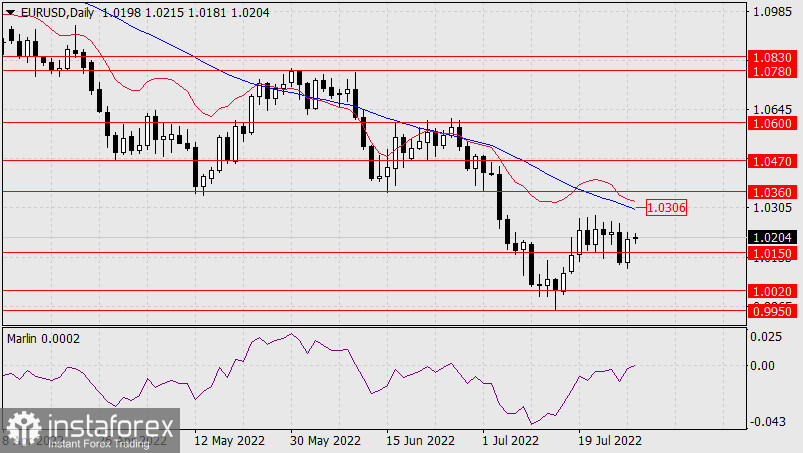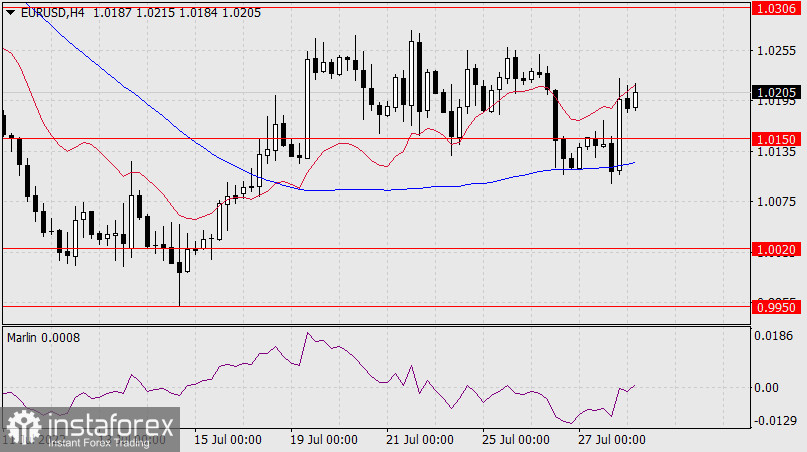As a result of yesterday's Federal Reserve meeting, which raised the base rate by 0.75% to 2.50%, the dollar index fell by 0.70%. There was no reason for this anomaly. Explanations in the media about the market's expectations of a 1.00% rate hike should hardly be taken seriously. Fed Chairman Jerome Powell said that the next increase (in September) could be "significant" (0.50-0.75%), but in the future the Fed will not give clear preliminary instructions on the intentions of the central bank. Powell also hinted that the Fed could start cutting rates at any time. This is probably the main reason for the dollar's reluctance to grow, because the US external debt now stands at 30.550 trillion dollars, the debt limit is set at 31.381 trillion dollars. Servicing such debt becomes burdensome for the budget, which is why the Fed has adopted the tactics of ultra-rapid rate hikes for the short term in order to dampen inflation and return the rate to low levels again.
The yield on 5-year US government bonds fell from 2.89% to 2.83%. The market was talking about the risks of a recession in the US. Today there will be data on GDP in the US for the 2nd quarter, which can significantly affect the market. The economy for the 1st quarter plunged by 1.6%, the forecast for the next period is 0.4-0.5%. Data worse than the forecast may return the dollar to growth as a safe-haven currency.

The euro's current situation is still rising. If today's data allows the euro to strengthen further, the nearest target will be the MACD line at around 1.0306, further the 1.0360 target will open. As before, from the resistance of 1.0360 we expect the price to turn down, but if this plan is violated, the price will settle above 1.0360, the growth will continue to 1.0470.
The signal line of the Marlin Oscillator is trying to move into the zone of positive values. If it fails, the oscillator will turn down, and the price will soon go down without working out the MACD line. The price drop below 1.0150 opens the target at 1.0020.

The trend is upward on the four-hour chart. The price is growing briskly after a rebound from the support of the MACD line, now it is struggling with the balance line, and the Marlin Oscillator has already moved into the positive area. The price may continue to grow until the US report is published. Further on the circumstances.





















